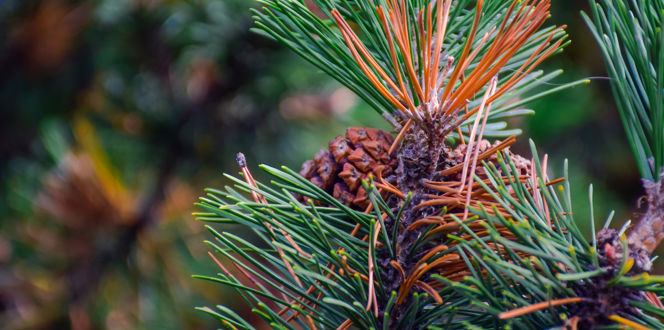Damage Caused By Birch Leafminer:
Birch leaves develop brown, inflated blotches by mid to late spring. Leaves may be killed by small larvae inside the leaves that devour green tissues between the upper and lower surfaces. A severely infested tree canopy takes on a tan-brown appearance and defoliates prematurely. Repeated years of an infestation can cause branch die-back and leave trees more vulnerable to borers and environmental stress.
Hosts:
Birch trees.
Birch Leafminer Life Cycle:
The adult birch leafminer is a 1/8-inch long, black, gnat-like insect referred to as a sawfly. The female deposits eggs into young leaves. Larvae hatch and begin feeding inside the leaves, causing damage. They mature within a few weeks, drop to the ground to pupate, and emerge as sawflies. There are one to two generations per year.
Birch Leafminer Management:
Foliar applications are effective when the birch leaves are about half-grown in spring. The second application in about three to four weeks may be needed to minimize damage from the second generation of birch leafminers. For season-long results, inject an application into the soil from August through October the year prior to birch leafminer activity. This new product accumulates slowly in the tree. Before planting, select a site where birch trees will prosper, such as in moist, well-drained sandy, or loamy soils. Trees will fail and become more stressed by leafminer damage when they are planted in heavy clay-type soils. Fertilizing, mulching, and watering also will help birch trees recover from birch leafminer damage.





